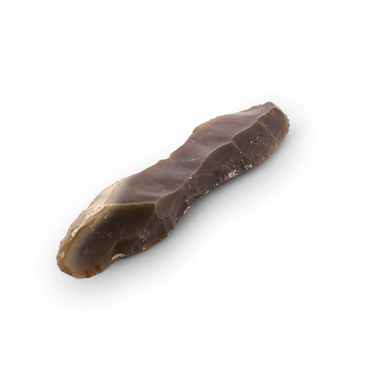The chopper-sickle on display is a tool from the Late Bronze Age. The precise purpose of these sickles remains uncertain. Most researchers believe they were primarily used for agricultural purposes. Another hypothesis suggests they may have been connected with animal husbandry, as they were used by cattle farmers. There is also speculation about their use in combat or as general-purpose tools.
Many of the known examples are unfinished products: they did not undergo the post-casting treatment. They lack handles, which some scientists assume would have been welded on. However, some of these items were modified to various degrees and clearly belonged to a group of working tools before being melted down as part of foundry hoards. Some chopper-sickles featured a semblance of a handle, separated from the blade by a small ridge.
All-metal knives and razor blades from ancient cultures of the Don region have a single hole located at the end of the handle. This hole was used to attach a strap or a pendant to the item. Similarly, chopper-sickles could also have holes at the end. In these cases, the narrowed end could serve as the handle itself, as it also covered the thicker rim, like the butt of an ax.
Finds of chopper-sickles are primarily associated with the area occupied by representatives of the so-called Srubnaya culture, also known as Timber-Grave culture. This was a late Bronze Age culture that spread over large parts of Eastern Europe between the 18th and 12th centuries BCE. Its area extended across the steppe and forest-steppe zones from the Dnieper River to the Urals region.
Researchers have discovered individual monuments of Srubnaya culture in the North Caucasus and Western Siberia. Representatives of this Bronze Age culture are believed to have been Indo-European: they spoke languages that are ancestral to most European languages and those of India and Iran. Climate change at the end of the second millennium BCE led to the disappearance and transformation of this culture. According to archaeologists, chopper-sickles are one of the characteristic artifacts of the Late Bronze Age period.



